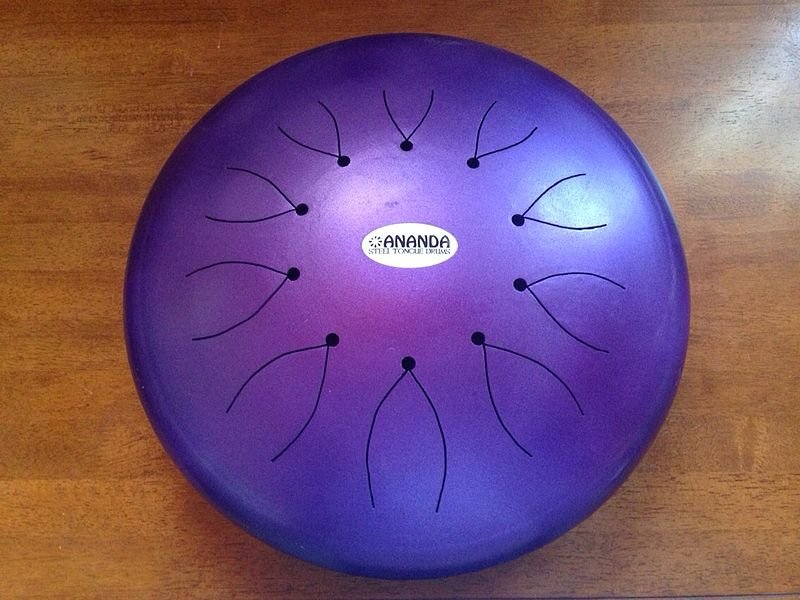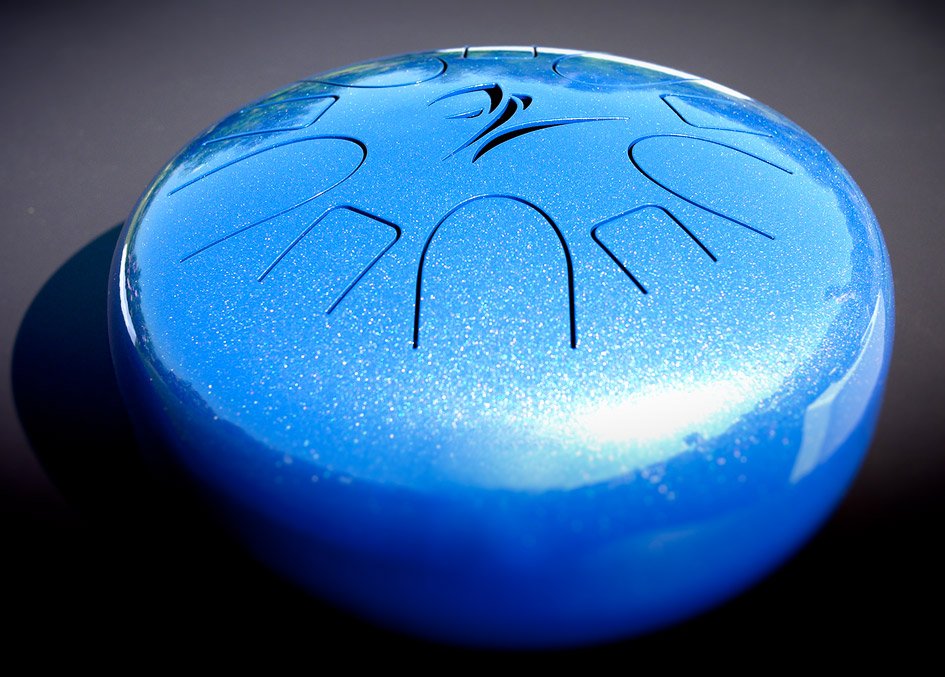How to Play a Steel Tongue Drum like a Pro

While it seems most innovation in music nowadays comes from electronics, there are really new acoustic instruments as well. Many want to learn how to play a steel tongue drum, as this instrument only appeared in 2007. It’s become popular due to its ease of making and its self-sufficient sound which allows for using it for the rhythm and for the melody at the same time.
The sound of a tongue drum is not as abrupt as that of traditional drums that form a drum set. It has a long sustain time, so notes flow into each other unless of ends soon. This unique sound makes the steel tongue drum for beginners a popular and easy-pitched instrument.
A Complete Steel Tongue Drum Guide – How to Play Tongue Drum
Contents
While most percussion instruments in Western culture are unpitched, the very idea of a pitched drum is quite common in Oriental music. But there is nothing truly exotic about a metal tongue drum. Its prototype, a Hang, was developed by Swiss engineers, and a steel tongue drum is the further development of the same idea. So relax, there is nothing strange that learning steel drums will require from you.
What is a Tongue Drum?
The tongue drum is a pitched percussion instrument. The tongues on its face are used in the same ways as the keys of the piano. Hitting one of them will produce a note, which allows for playing melodies on it.
Tongues are the most important part of this drum. Not only do they define the pitch of the sound they make when hit. They are also easy to detect visually, often given distinct shapes along with numbers. That makes learning steel drums easier, at least the particular drum you have.
Playing tongue drum for beginners
The first thing you should learn is that each steel tongue produces its own note when hit. They are usually marked by numbers instead of traditional notation, and these numbers may vary too. Hardly will you see, though, a steel drum with a full octave. The manufacturers usually care for players to pick melodies easier or improvise free, so they offer pentatonic scales instead, choosing notes that form chords or sequences well. Even if you just learn how to play a metal drum, hardly will you produce a dissonating sequence with a drum like this. On the other hand, it restricts the melodies you’d potentially play.
There can be 15, 13, 11, 9, or even 9 or 8 notes on a drum. Of course, there is no unified notation for these. The best steel drum for beginners is probably one with fewer tongues: it provides less freedom when playing, yet you can master it quickly. On the other hand, drums with more tongues may feature the same notes from different octaves, so the restrictions remain.
Most factory-made steel drums come with manuals and even songbooks. With them, you can learn which note every number means, how to play certain songs, or where to get more. Of course, you can just pick songs and melodies according to your ears, but it’s easier with a manual. According to them, you can learn how to play drum versions of these songs and then pick up more.
Hands vs. Mallets
If you see videos on YouTube, most players use mallets to hit their steel tongue drums (unlike, say, Hangs that are played with the hands). Mallets are better for a tongue drum as they make you hit more accented and help you better focus it on that particular tongue you want to sound at the moment.
On the other hand, if you know well how to play a hand drum (Hang or similar), you can apply the same technique to a steel tongue drum. You will have to get used to its tonic system first, though, no matter if you play with your hands or with the mallets. Finally, you can have various pairs of mallets to produce different sounds. While you learn to play drum patterns in various ways to find yours.
FAQ
How do you read steel tongue drum music?
There are various sites where notes are represented as numbers. Usually, the manufacturer of the drum recommends resources where you can find these songs or even attaches a songbook. These books can apply to drums by other manufacturers using the same pitch layout and numeration.
How do you adjust a steel tongue drum?
Most of them come preadjusted. There are simple and non-destructive methods of adjusting the sound of separate tongues by attaching small magnets to them. The pitch depends on the weight of a tongue, so you can lower it by adding some more. You’ll need to use your ears to adjust it right. If you have mastered this art, you can retune the drum right during the performance if necessary. Some drums come with magnets and special slots for them, with manuals covering the subject.

How do you play the tongue drums?
When it comes to posture, it’s recommended to sit on a stool or cross-legged and to hold the drum face up so that the tongue producing the deepest note is the closest to you, and the highest one is the farthest. Tongue by tongue plays the song. Still, it’s not the unmovable canon; you can sit the most comfortable way for you (though chances are this will be one).
Can you use it for the rhythm and the melody at the same time?
It requires some mastery. Of course, you can use its tongues to produce notes that form the melody and its edge to make unpitched drum sounds that form the rhythm. It’s better, though, if you focus on the melody and someone else makes the beat.
Speaking in Steel Tongues
Yes, this art sounds just as mystical and even shamanic. Steel tongue drums entered our musical culture about the same time that iPhones entered our pockets. Now, if you bring this instrument to a home party or just to a street, you’ll catch everyone’s eyes and ears – unless someone else has their own.
New as it is, the steel tongue drum has lots of fans already, and its variations are quite numerous. Why not talk about it to your musician friends on social media? Just share this, and commenters will not leave you alone for long. Or you can share your experience or ask a question on the steel tongue drum right here.

